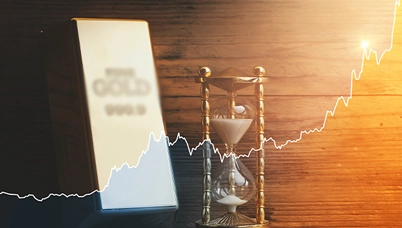RBI Governor meets the PM: Which way will the rupee go?
Posted On Wednesday, Jun 04, 2014
Recently the financial media was abuzz with RBI Governor meeting the new Prime Minister. While a lot of issues would have been discussed between the two; the topics they would have surely touched upon is the level of the Indian rupee vis-a-vis the US dollar.
While we cannot predict future levels of the rupee we can discuss as to what does rupee appreciation actually mean and how does it impact us and the Indian economy?
What does Rupee Appreciation mean?
Currently riding on a wave, the Indian rupee reached its highest level in the past 11 months in May, 2014 and with BJP forming the government with a clear majority, the prospects of further appreciation cannot be ruled out. Economists, analysts, market participants all have their own reasons on the recent improvement in rupee-dollar correlation.
Rupee appreciation means that rupee has become more valuable with respect to the USD and USD is now cheaper than what it used to be earlier. This, in turn, means that Indians can afford to import more by spending the same amount of rupees and hence is a huge boost for importers.
What caused the Rupee to appreciate?
The main reasons for this sharp appreciation in rupee are:
FII investments
FIIs have already invested INR 58,145 crore (till 30th April, 2014) in comparison to INR 62,288 crore in the entire calendar year 2013. This high inflow was due to the speculation that a stable, assertive, and business-friendly government would be elected to power which would ultimately stimulate the stock markets and in turn help FII’s in booking profits from the Indian markets. Now, when a stable government has been formed, FII investments may increase which will strengthen the rupee further.
The value of rupee follows the simple demand and supply rule of economics. If the supply for the dollar in India is more than its demand, rupee appreciates and dollar depreciates. Therefore, huge FII investments mean that supply of dollars in India has increased with respect to its demand in India. Thus, going by the logic of demand supply rule this decreases the value of dollar in terms of rupees.
Improvement in China’s PMI data
China’s PMI (Purchasing Managers Index), an indicator of the economic health of the manufacturing sector has improved and was at a 5 month high in the month of May 2014. This improvement may be due to the increase in their domestic consumption or international consumption.
Domestic consumption may not have an impact on the value of USD as it shows that the goods and services are consumed in the country where they are produced but international consumption affects USD as all international trade takes place in dollars.
Hence, an increase in international consumption in China shows that countries are slowly getting out of debt and their economic growth is on the positive side. Thus, they have started to invest in Plant and Machineries, infrastructure etc.
This increase in their spending might have inclined them towards India too for investments in different sectors. Thus, there has been an increase in supply of dollars with a relative constant demand. Hence, with general demand supply rule of economics, the value of dollar depreciated with respect to rupee.
Now, let us understand the impact of this currency appreciation. How, for some people it helps to make huge earnings and for some it incurs huge losses. The following points will explain the advantages and disadvantages of a rising currency:
Benefits of Rupee Appreciation
1. Advantages to the importers
A strong rupee is a huge advantage to importers. An example will elucidate: Assume an importer brought in goods from US and he has to pay 100 USD. Let’s take the value of 1 USD = Rs. 55 at the time of trade. So, his net payable will be Rs. 5500. Suddenly, at the time of payment if the rupee appreciates sharply in terms of dollar and let’s take 1USD at that time becomes Rs. 50. So, at the time of payment the importer has to pay Rs. 5000 of the same trade due to the currency fluctuation. Therefore, his net “profit” only due to appreciation of rupee becomes Rs. 500. This is how the importers are benefited when rupee appreciates in terms of dollar.
2. Decrease in inflation and rise in purchasing power parity
The common man, who has been worried over the rise in fuel prices that resulted, not only in the increase in the cost of transportation, but also were partly responsible for the rise of overall inflation, is cheerful over the rupee’s appreciation against the dollar. Oil price is one of the most important factors that put stress on the price of each and every commodity.
India imports a bulk of its oil requirements to satisfy local demand, which is rising year-on-year. In International markets, prices of oil are quoted in dollars. Therefore, when the price of dollar decreases in terms of rupees, the cost of import of oil also decreases. Hence, this potentially results in a decrease in inflation rate.
3. Improvement in Current Account Deficit (CAD)
As far as the Current Account Deficit (CAD) is concerned, the steep appreciation in the rupee will definitely help to narrow down the gap of CAD (which is the difference between exports and imports of a country) and may give some relief to the government.
Disadvantages of Rupee Appreciation
If the depreciating rupee sparked panic in 2013, the currently appreciating rupee will also create problems. Some of the problems are:
1. Exports become expensive
An appreciating rupee would mean that the exporters would receive less payment in rupees for their exports as every dollar will constitute less rupees. So, this means that price of the goods and services which are being exported decreases substantially. Sectors such as IT, Pharmaceutical, Textile, and Automobile will be impacted by the appreciating rupee. Their sales realization will decrease due to strengthening of Indian rupee.
2. Loss in travel and tourism sector
Travel and tourism is a sector which will suffer from the appreciation of rupee. Let’s take up an example again to understand how this industry will hurt. Suppose, if a trip to India costs Rs. 1,00,000 to a foreigner and the dollar is quoting 1USD = Rs. 50 at that time. So, the trip would cost the foreigner 2000 USD. If the rupee strengths and suppose it quotes at 1USD = Rs. 45. Then the same trip would cost the foreigner approx. 2222.22 USD. This could make foreign tourists think before visiting India and potentially impact the revenues from this sector.
To conclude, given the character of the forces driving rupee appreciation, it is unlikely that this surge would continue for a longer period of time. It is also likely that this trend may even be reversed, encouraging capital exit from the FIIs. However, in our view, the ideal scenario that will help rupee appreciate for a longer term would be increase in manufacturing productivity, boost to exports, reducing CAD, and FDI investments.
Source - RBI, SEBI, National Bureau of Statistics of China
The views expressed here in this article are for general information and reading purpose only and do not constitute any guidelines and recommendations on any course of action to be followed by the reader. The views are not meant to serve as a professional guide / investment advice / intended to be an offer or solicitation for the purchase or sale of any financial product or instrument or mutual fund units for the reader. The article has been prepared on the basis of publicly available information, internally developed data and other sources believed to be reliable. Whilst no action has been solicited based upon the information provided herein, due care has been taken to ensure that the facts are accurate and views given are fair and reasonable as on date. Readers of this article should rely on information/data arising out of their own investigations and advised to seek independent professional advice and arrive at an informed decision before making any investments. Please visit – www.quantumamc.com/disclaimer to read scheme specific risk factors.
Related Posts
-

Understanding GIPS: The Global Standard for Performance Reporting
Posted On Wednesday, Jan 14, 2026
In the world of investing, everyone loves a good performance number.
Read More -

Equity Monthly for January 2026
Posted On Friday, Jan 02, 2026
Indian markets remained range-bound in 2025
Read More -

Gold Monthly for January 2026
Posted On Thursday, Jan 01, 2026
Gold Market Review and Outlook: 2025–2026
Read More



